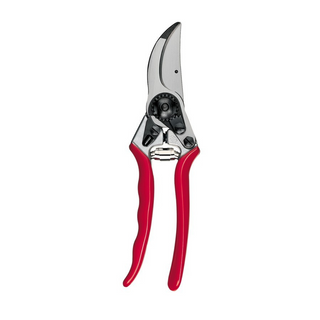Plant propagation is a fascinating process that every gardening enthusiast should explore. Whether you're a seasoned green thumb or just starting out, understanding how to propagate your own plants can help you expand your garden and save money on buying new plants.
In this ultimate guide to plant propagation, we will unlock the secrets of this botanical art form and provide you with all the information you need to get started.
UNLOCK THE SECRETS OF PLANT PROPAGATION
Propagation is the process of creating new plants from existing ones, and there are several methods to achieve this, including the germination occurs sexual propagation and asexual propagation.
One popular method, especially for beginners, is propagating plants from cuttings. This technique differs from seed germination and involves taking a part of a healthy plant, such as a cut stem or leaf, and encouraging it to develop roots and grow into a new plant.
Let's explore this method in more detail.
A BEGINNER'S GUIDE TO PROPAGATE PLANTS FROM STEM CUTTINGS
Propagating plants from a stem cutting is an excellent way to reproduce common houseplants and garden plants, whether they are flowering beauties or succulent specimens. It's a cost-effective way to produce seedlings and to expand your garden and also an opportunity to develop your gardening skills. You'll be surprised at how many plants can be propagated once you've learned the plant propagation process.
Before diving into the propagation process, it's crucial to understand that different plants, such as hybrid plants and many woody plants, have different requirements and a few plants are more difficult to propagate. Researching the specific needs of your existing plant will give you a better chance of success. Here are some essential steps to get you started.
CHOOSE A HEALTHY PARENT PLANT
The first step in propagating plants from cuttings is to select a healthy parent and viable seed plant. Look for a mother plant that is disease-free, has vibrant foliage, and shows no signs of stress. Choosing the right parent plant is crucial because it will determine the quality of the new plant you'll be propagating and will have a higher chance to produce plants.
Once you've selected the perfect parent plant, it's time to gather your tools. You'll need a clean, sharp pair of pruning shears or a sharp knife to make a clean cut. Disinfect your tools before using them on the parent plants to prevent the spread of any potential diseases.
Next, identify a suitable stem or leaf from the main plant to take a cutting from. Ideally, you want to select a stem that is young and flexible, as it will have a higher chance of rooting successfully and growing their own roots. Avoid using old stems from woody plants as they are less likely to grow roots.
MAKE A CLEAN CUT
When making the cut, aim for a clean, diagonal cut just below a node. A node is a point on the stem where leaves or branches emerge. This is where the new roots will develop. Make sure your cut is clean and smooth, as jagged edges can hinder root formation.
After taking cuttings, remove any leaves from the lower portion of the stem. This will prevent excess moisture loss and redirect the plant's energy towards root development. You can also dip the first hardwood cuttings and end of the stem in rooting hormone powder to encourage faster root growth.
PREPARE THE ROOTING MEDIUM
Now it's time to prepare the rooting medium. Many plants can be propagated in water but you can also use a variety of materials, such as perlite, vermiculite, or a mixture of peat moss and sand. Fill a clean container with the rooting medium and moisten it slightly. Make a hole in the medium using a pencil or your finger, and gently insert the cutting into the hole, ensuring that at least one node is buried in the medium.
Place the container in a warm, well-lit area, but away from direct light. Maintain a consistent level of moisture in the rooting medium by misting it regularly or covering the container with a plastic bag to create a mini greenhouse effect. This will help create a humid environment that promotes root growth.
MONITOR YOUR PLANT CUTTING AND ROOT GROWTH
Over the next few weeks, keep a close eye on your cutting and keep the soil moist. You may start to see new growth emerging from the tip of the cutting, indicating that roots are forming. Be patient, as this new leaf growth can take several weeks or even a few months for roots to develop fully from root cuttings and leaf cuttings.
Once your cutting has developed a healthy root system, you can transplant the rooted cutting into a larger pot or directly into your garden. Handle the new plant with care, ensuring that you don't damage the delicate roots. Provide it with the appropriate care and maintenance and watch as it grows into a beautiful, thriving plant.
PROPAGATING PLANTS FROM CUTTINGS
Remember, propagating plants from cuttings is a skill that takes time and practice to master. Don't be discouraged if your first attempts to propagate plants are not successful. Learn from your experiences, make adjustments, and keep trying. With each new cutting, you'll gain valuable knowledge and improve your plant propagation skills.
STEP 1: IDENTIFYING ROOTING OPPORTUNITIES
The first step in propagating plants from cuttings is identifying which parts of the plant are suitable for rooting. Look for healthy stems that are free from disease or damage. Ideally, choose stems that are flexible but not too young or too old.
When selecting root plant cuttings, it's crucial to consider the overall health of the plant. A plant that is thriving and has vibrant foliage is more likely to produce successful stem cuttings. Avoid stems that show signs of disease, such as discoloration or wilting. Additionally, inspect the stem for any physical damage, such as cuts or bruises, as these can hinder the rooting process.
PLANT GROWTH STAGE
Furthermore, it is important to understand the growth stage of the plant when choosing a suitable cutting. Stems from young plants may lack the necessary nutrients and energy to develop roots successfully. On the other hand, stems that are too old may have a lower success rate due to reduced vigour. Therefore, it is advisable to select stems that are in the middle stage of growth, where they are neither too young nor too old.
Another crucial factor to consider when identifying rooting opportunities is the presence of nodes on the stem. Nodes are the points where leaves and branches meet the stem. These nodes contain meristematic tissue, which is responsible for the growth and development of new roots. By selecting a cutting with multiple nodes, you increase the chances of successful roots forming and for the new plant to continue growing.
It is worth noting that the positioning of the nodes on the stem can also influence the success of rooting. Nodes that are closer to the base of the stem tend to have a higher concentration of auxins, which are plant hormones that promote root development. Therefore, if possible, choose a cutting with nodes positioned closer to the base of the plant parts of the stem to enhance the rooting process.
Overall, the process of identifying rooting opportunities involves careful observation and consideration of various factors. By selecting healthy stems, assessing the growth stage of the plant, and choosing cuttings with multiple nodes, you can increase the likelihood of successful propagation through cuttings.
STEP 2: PRUNING AND PREPARING THE CUTTINGS
Now that you have identified the perfect stem to propagate, let's dive into the process of preparing the cutting for rooting. It's crucial to ensure that you have the right tools for the job. Grab a pair of clean and sharp pruning shears, as they will make a clean cut that promotes healthy and vigorous growth throughout.
When making the cut, aim for a 45-degree angle just below a node. This angle increases the surface area available for root development, providing more opportunities for the cutting to establish strong root systems. The clean cut also minimizes the risk of infection or disease, ensuring the best chances of success.
OPTIMISE ROOT CUTTINGS FOR GROWTH
After making the cut, it's time to optimize the cutting for root growth. Start by removing any leaves from the lower part of the main stem, leaving only a few at the top as cutting needs some leaf growth to continue photosynthesis. This strategic removal of leaves reduces the risk of moisture loss through transpiration. By minimizing the leaf surface area, the plant cutting can focus its energy on root development rather than sustaining unnecessary foliage.
Additionally, removing the lower leaves prevents them from coming into contact with the rooting medium, reducing the chances of rot or fungal infections. It's essential to create an environment where the cutting can thrive without any hindrances.
Remember, each step in the propagation process plays a vital role in the overall success of your cuttings. Taking the time to prune and prepare the cuttings properly will increase the chances roots form and future growth. So, pay attention to the details and set your cuttings up for success!
STEP 3: CREATING THE PERFECT ENVIRONMENT FOR ROOTING
Rooting cuttings require specific environmental conditions to thrive. To create an ideal environment, you'll need to provide adequate moisture, warmth, and light.
When it comes to creating the perfect environment for rooting cuttings, there are several factors to consider. One of the most important factors is choosing the right container. The container you choose to root your cuttings plays a crucial role in their success. Selecting a container that is deep enough for the roots to grow and has drainage holes to prevent waterlogging is essential.
CHOOSING THE RIGHT CONTAINER FOR YOUR PLANT CUTTINGS
You have a variety of options when it comes to choosing a container for rooting cuttings. Peat pots, compressed peat pellets, propagation trays, a new pot with a clear plastic bag, a small vase or even recycled containers can all be used when growing plants indoors. The key is to ensure that the container will retain moisture and is suitable for the size and type of cutting you are planting.
Once you have chosen the right container, it's time to prepare the rooting medium. A well-draining rooting medium is essential for the success of your cuttings. One popular option is a mixture of perlite and peat moss, which provides excellent drainage and aeration. Another option is to use a quality seed-starting mix, which is specifically formulated to promote root development.
Before filling the container with the rooting medium or potting mix, it's important to moisten it. Ensuring that the growing medium is evenly damp but not overly wet is crucial. This will provide the perfect balance same depth of moisture for the cuttings to establish and form roots.
CREATE THE PERFECT ENVIRONMENT
Creating the perfect environment for rooting cuttings also involves providing the right amount of light. While some cuttings prefer bright, indirect light, others may require more shade. It's important to research the specific light requirements of the plant you are propagating and place the container in an appropriate location.
In addition to light, warmth is another key factor in creating an ideal environment for rooting cuttings. Most cuttings root best at temperatures between 18°C to 24°C (65°F and 75°F). Placing your rooting plants in a warm location, such as near a heating vent or on a heating mat, can help promote root growth.
Ensuring your cutting gets the right amount of water is also essential. Tap water is fine, however fresh room temperature water is best.
By carefully selecting the right container, preparing the soil surface with appropriate rooting medium, and providing the right amount of light and warmth, you can create the perfect environment for rooting cuttings. This will give your cuttings the best chance of successfully establishing roots and growing into healthy plants.
STEP 4: MONITORING AND CARING FOR YOUR PLANT CUTTINGS
Once you have set up the ideal rooting environment to propagate plants, it's essential to monitor and care for your plant cuttings to ensure successful propagation.
ESSENTIAL TIPS FOR SUCCESSFUL ROOTING
While each plant species may have specific requirements, there are some general tips to ensure successful rooting. Firstly, mist the cuttings regularly to maintain humidity around them. This prevents excessive moisture loss and aids in root development.
It's also crucial to provide adequate warmth for your cuttings. Most plants prefer temperatures between 18-24°C (65-75°F) for optimal root growth. If your home is cooler than this range, consider using a heat mat, grow lights, or a propagation dome to provide the necessary warmth.
TROUBLESHOOTING COMMON ISSUES IN PLANT PROPAGATION
As with any gardening endeavor, plant propagation can come with a few challenges along the way, such as stem rot, root rot or failure to root. However, armed with knowledge and perseverance, you can overcome most issues that arise from the stock plant itself.
STEM ROT
One common issue in plant propagation is stem rot caused by excessive moisture. To prevent this, ensure that your rooting medium is well-draining and avoid over watering. Additionally, proper sanitation practices, such as using clean pruning tools and sterilizing containers, can help prevent the spread of diseases.
FAILURE OF CUTTINGS TO ROOT
Another common problem is the failure of cuttings to root. If your cuttings are not showing signs of root growth after several weeks, it may be due to various factors. Check that your cutting has enough nodes for root development, adjust the environmental conditions if necessary, and be patient. Some plants take longer to root than others.
MASTERING PLANT PROPAGATION
While it does require a few supplies and patience, mastering the art of plant propagation from cuttings is a rewarding and exciting journey. Once you've mastered the art of propagation, you'll be able to propagate a ZZ plant, propagate succulents, common houseplants and more.
As you gain experience and confidence, you can experiment with other propagation methods, such as grafting, vegetative propagation, water propagation or compound layering which can grow into mature plants faster. With practice, you'll soon be able to multiply your favorite plants and share the joy of gardening with others.
Remember, patience and attention to detail are key when it comes to propagating plants. Enjoy the process, learn from your experiences, and soon you'll have a garden teeming with vibrant, healthy baby plants that you've nurtured from cuttings.




